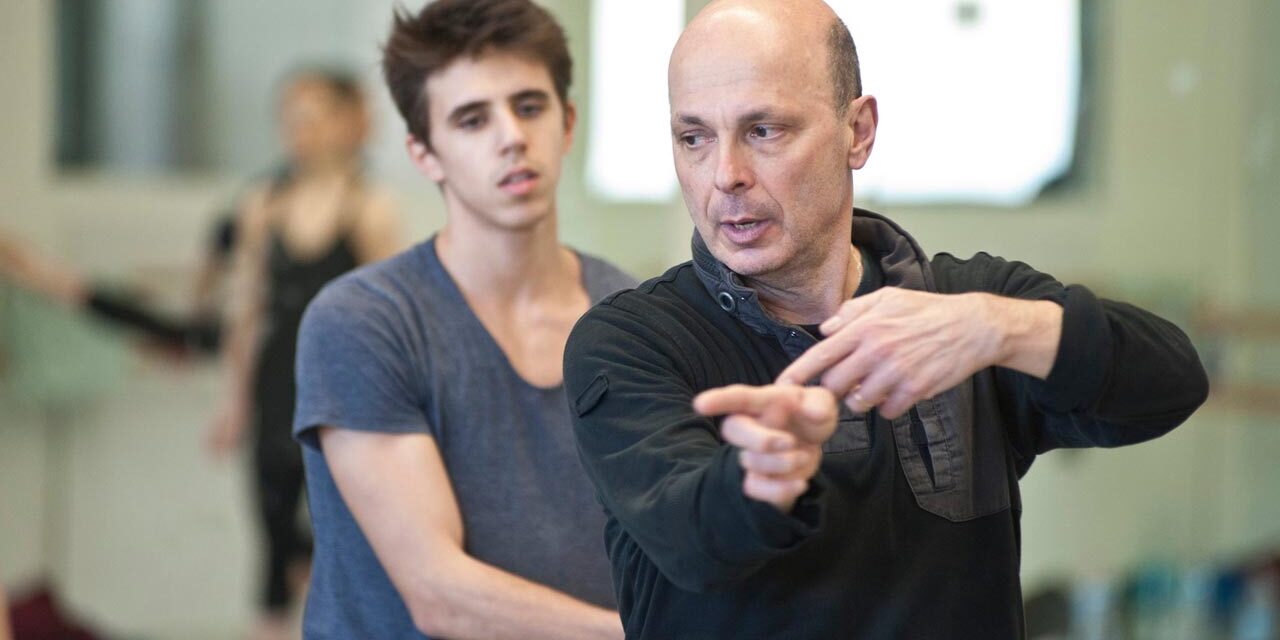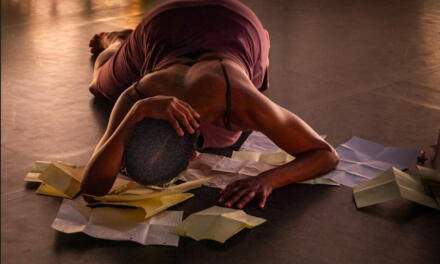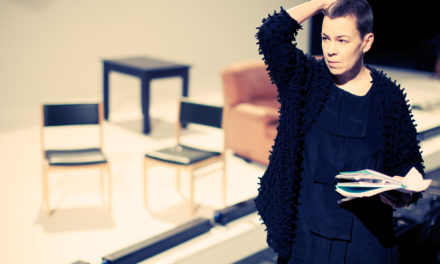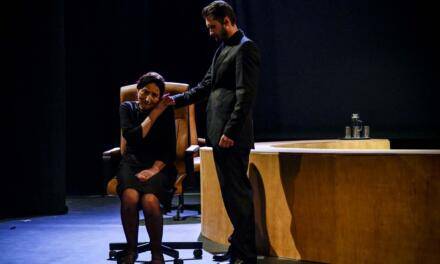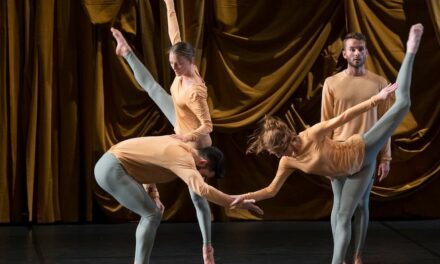Dancer and choreographer of international reputation, David Bombana is required to bridge artistic, curatorial and administrative skills for his new role as Director of the Corps de Ballet of Teatro Massimo. As a principal dancer at Teatro Alla Scala in Milan, he had the chance to perform in works by Rudolf Nureyev, Moris Bejart, Roland Petit and Glen Tetley, among others. Later in his career, he also became a principal dancer at the Bayerische Staatsballett Munich in Germany. His productions Liaisons Dangereuses (originally created for Ballet du Capitole de Toulouse) and Romeo e Giulietta (“Danza & Danza” award for best Italian Ballet production 2015) were planned, before the COVID-19 outbreak, to be presented in Palermo during summer 2020. Currently, he is working on a new creation for the Corps de Ballet of Teatro Massimo while adapting the creative process to the imposed limitations of social distancing. During his first week of arrival at Teatro Massimo and in the midst of long rehearsals and training sessions scheduled for maximum of eight dancers at a time, he generously dedicated himself to a short interview outside of La Sala degli Stemmi (Coat of Arms Room) at Teatro Massimo.
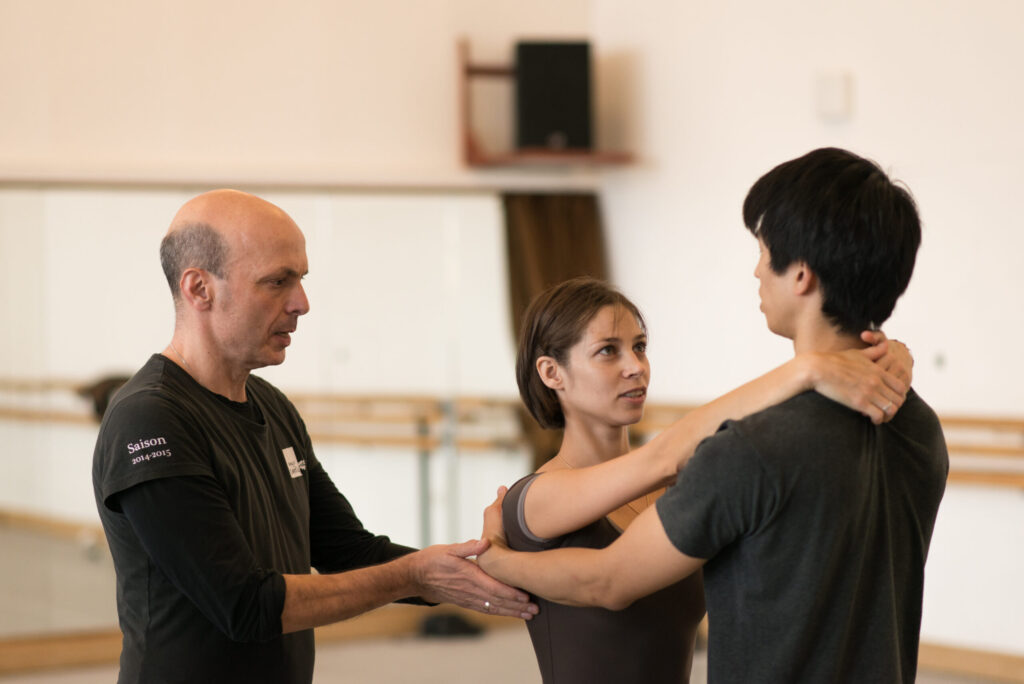
Maria Yakovleva and Masayu Kimoto rehearsing with Davide Bombana for his Roméo et Juliette (National Austrian Music-Theatre Award 2019) in the music of Hector Berlioz at Wiener Stastsballet in Vienna. Photo by Ashley Taylor.
Ariadne Mikou (AM): You have just moved to Palermo and accepted the role of the Director of the Corps de Ballet of Teatro Massimo. What are your first impressions and what are you currently working on?
Davide Bombana (DB): I have always been mesmerized by Sicily’s beauty that I have already visited a couple of times in the past. Palermo, in particular, fascinates me because of its Arab-Norman architecture and its UNESCO-protected monuments, as well as its multi-cultural identity.
As I am not new to the city, I am also not new to the Teatro Massimo. A few years ago, my choreographic work Beyond Skin (2001-2003) was performed by the French company Ballet du Rhin on the stage of Teatro Massimo. I have to confess that when I first saw Palermo’s Opera House, I was deeply astonished. However, visiting the city as a tourist and as a guest choreographer is a completely different experience from working in the city as the Director of the Corps de Ballet.
At the moment, I am rehearsing together only with 26 dancers from the Corps de Ballet of Teatro Massimo for a choreographic work originally inspired by the current social context. The dancers are very responsive and collaborative and although they were inactive for three months, they are in great shape. This choreographic creation will premiere in the open-air theatre of the Teatro di Verdura on the 2nd of August under the title Ripar-Tänze. This is an Italian-German compound word that I invented having in mind the Italian word “ripartenze” and the concept of the new beginning through dance (tanz) at the end of the lockdown. The intricate but organized chaos of Beethoven’s Grosse Fuge op.133 — a piece of music already put on stage by iconic choreographers such as Hans van Manen, Anne Teresa de Keersmaeker and Lucinda Childs — brought in my mind people in captivity in search of the contact with the other and of regaining something that got lost. Beethoven’s music gave me the perfect context to refer to the situation in which we all are together but isolated.
AM: Undertaking the position of Director for a big institution like Teatro Massimo requires a lot of responsibilities even more now that we are during a global pandemic. How do you plan to respond to the given conditions of social distancing that prevent the large accumulation of artists and audiences?
DB: Before the explosion of the pandemic, I had been invited by Francesco Giambrone, the General Director (the “Sovrintendente”) of Teatro Massimo, to undertake the role of Director of the Corps de Ballet. I began to design the program of the season that we are currently running. As you may imagine, this plan has drastically changed due to the special circumstances that we find ourselves. Despite the difficulties associated with COVID-19, I feel that we must take this virus as an opportunity to help each other.
Let me clarify, I feel very honored to have been proposed to undertake this position, although I was initially hesitating to accept it during such a challenging moment. I came to realize that this role under the given circumstances requires ethical behavior. Through this lens, I have accepted this challenge happily as I decided to view it as an opportunity to give my support to Teatro Massimo. By accepting this position I had to also curate a new program and come up with choreographic solutions that would be possible to apply during the circumstances of social distancing that allow a maximum of eight dancers to share the stage and the rehearsal studio.
Currently, I rehearse with small groups of dancers in different time slots and we are going to put everything together on stage during the very last days before the premiere. In terms of organization and personal commitments, this is a very challenging process for the dancers because in some cases they have to wait all day after the end of their training class and before they begin to rehearse. Despite this challenge, the dancers are very excited to be able to go back to work and rehearse for Ripar-Tänze.
Furthermore, considering that the artists are not allowed to touch each other, I have asked dancers that are partners in life to perform in the program that we are preparing to present on the 2nd of August. On the same evening with Ripar-Tänze, they will also appear as guests four principal dancers from Teatro Alla Scala (Martina Arduino and Marco Agostino, Nicoletta Manni and Timofej Andrijashenko) who will perform choreographic duets by Kenneth MacMillan, Mauro Bigonzetti and Heinz Spoerli (view the full program here).
AM: The Corps de Ballet of Teatro Massimo is currently one of the four remaining national ballet companies in Italy that are affiliated with an Opera House. This is a piece of evidence that Dance in this country, with a few exceptions regarding the Ballet tradition, receives less attention than it deserves. How do you plan to empower the already precarious conditions of the working dancers and to enlarge their visibility in the local and international scene?
DB: Being affiliated with an Opera House is a double-edged sword. On the one hand, an Opera House provides a supporting mechanism to create big productions as well as financial security, stability and life organization even for dancers under project-based contracts. On the other hand, the priority of an Opera House is usually the Opera, and Ballet is not taken into enough consideration primarily due to the tradition of Bel Canto that is still very strong in Italy.
To belong to an Opera House is a big responsibility because it requires to produce high-quality art, to invite famous choreographers and to ensure the maintenance of the classical and neoclassical repertory. But the most important priority is to know very well the dancers (with whom you work), in order to give them what they can do best and what takes advantage of their skills. For this reason, I will try to give choreographic opportunities to the dancers that will feed them.
One of the reasons why I accepted the position of Director of the Corps de Ballet of Teatro Massimo is because of Francesco Giambrone who holds genuine and sincere support for Ballet. With him and his highly competent team on my side, I felt very confident to embark on this adventure that could empower Ballet and begin to build something of importance in and beyond this city.
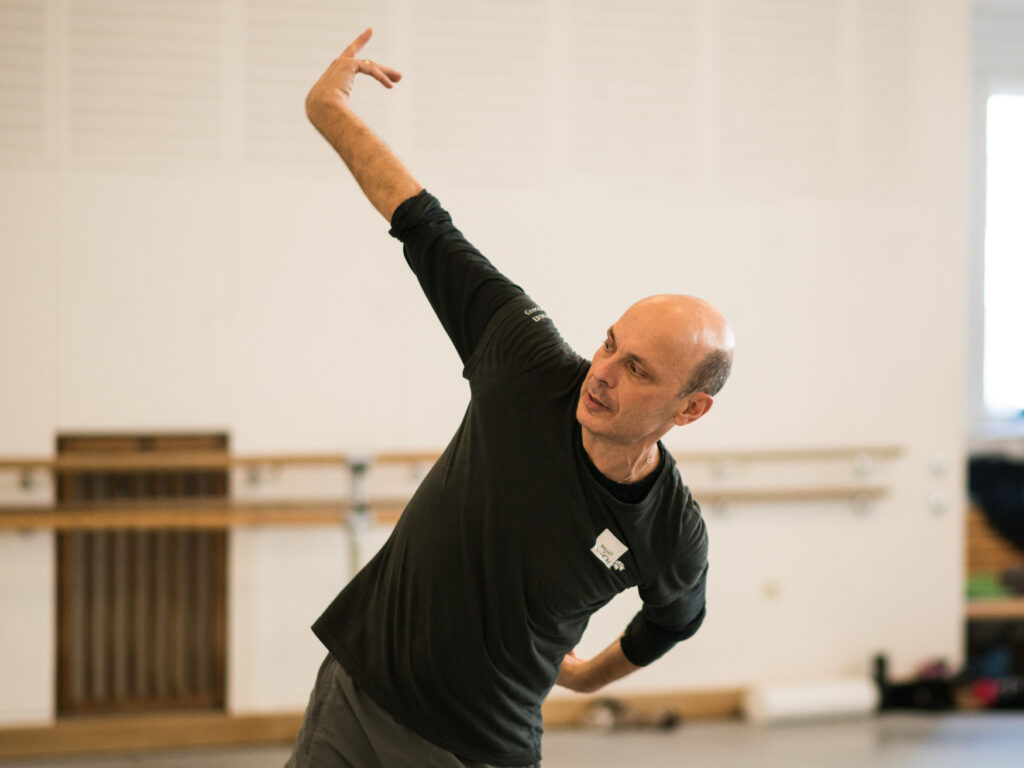
Davide Bombana showing the choreographic steps for his Roméo et Juliette (2017-2019) at Wiener Stastsballet in Vienna, Austria. Photo by Ashley Taylor.
AM: The programming direction until the beginning of 2020 aimed to gradually build a versatile ballet company and helped to accustom the local audience into an eclectic program consisting primarily of classical, contemporary ballet and modern repertoire choreographed by well-known as well emerging choreographers. As a choreographer and a dancer yourself with a strong classical background, which are your thoughts about the artistic language of contemporary dance and how do you see it fitting in the context of Teatro Massimo and the city of Palermo?
DB: I have a very classical background, but I am not a 100 percent classical dancer, speaking about bodily skills as well as my mentality. I absolutely admire the work of Wayne McGregor, Wim Vandekeybus, Maguy Marin and Jan Fabre. I would like to bring to the Corps de Ballet of Teatro Massimo a mixture of choreographic languages, giving emphasis to dance styles that promote dance as physical movement, in contrast, for instance, to non-danse which I absolutely appreciate but is hard to imagine in the context in which we are. I learn from every performance that I see and I am even willing to invite conceptual choreographers at Teatro Massimo. However, dance as dynamic motion has not to be forgotten.
Through my experience in Bayerische Staatsballett Munich in Germany, I had the privilege to work with the old generation of choreographers — Angelin Preljocaj, Hanz van Manen, Lucinda Childs, Thyla Tharp. I also had the chance to build a strong international network which I will activate to design the upcoming season. I plan to invite important international and Italian mid-career and young contemporary choreographers taking care that their choreographic style will suit the skills of dancers of the Corps de Ballet of Teatro Massimo. This program will be updated regularly in order to motivate and constantly challenge the dancers. It will also consist of classical and neoclassical repertory as well as my choreographic work such as Romeo e Giulietta (2015) which was originally created for Balletto di Toscana Junior.
AM: Teatro Massimo, thanks to the vision of the General Director Francesco Giambrone as well as the Mayor of the City and the President of Teatro Massimo Leoluca Orlando, has a very clear aim: to involve local communities in creative ways — such as the adaptation of Gaetano Donizetti’s L’Elisir D’ Amore for the poverty-stricken district of Danisinni —, in an effort to empower culture in defense from the Mafia, the city’s haunting past that overshadows the present. How do you plan to respond to this frame through Dance?
DB: First, I need to settle in the city and conclude the on-going choreographic production that requires a lot of attention at this particularly delicate and obviously difficult moment. After the premiere, I plan to open myself to the multi-cultural realities of the city. I think that it is going to be fascinating as well as very stimulating to have an exchange between the Teatro Massimo and all the diverse and cultural communities of the city because I believe that creativity is nurtured by these small nuclei. I will do it and I am very curious to proceed towards this direction. But my first duty, for now, is to restart together with the Corps de Ballet of Teatro Massimo!
AM: That sounds like a good plan. Thank you very much for your time and I wish you all the best for your new position.
NOTE
The interview took place in Palermo, Italy on the 20th of June 2020 and Davide Bombana was appointed Director of the Corps de Ballet of Teatro Massimo in Palermo on the 11th of June 2020.
This post was written by the author in their personal capacity.The opinions expressed in this article are the author’s own and do not reflect the view of The Theatre Times, their staff or collaborators.
This post was written by Ariadne Mikou.
The views expressed here belong to the author and do not necessarily reflect our views and opinions.

